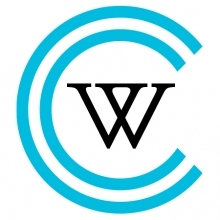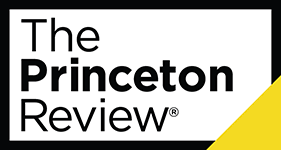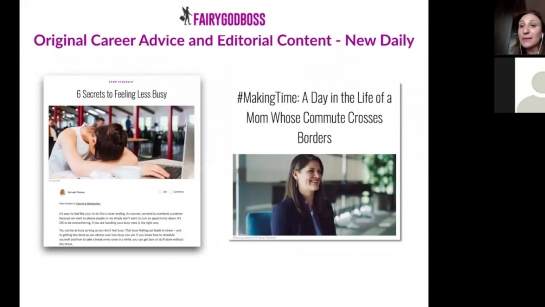Learn About Careers in Life Sciences

A career in the life sciences can include a broad range of companies, organizations, and foundations concerned with the study of living organisms, including biological sciences, botany, zoology, microbiology, physiology, biochemistry, and a number of related subjects. Employers may include biotechnology & pharmaceutical companies, academic institutions, healthcare organizations, foundations, and federal agencies. Most of the information on this page concerns non-patient facing options but there are opportunities to create career paths that merge patient and non-patient settings.
Alumnae Resume Guidelines

Your resume is generally a one-page document that clearly presents your current and past experiences and accomplishments so that your reader can understand the unique value that you bring to the table. As you begin to draft your resume, this resource will provide guidelines to consider.
Introduction to Interviewing

Career Education's Interviewing Resources are centered around The Four Pillars, or Four P’s (Preparation, Presentation, Proficiency, Partnership) of Interviewing, which serve as the foundation for a successful interviewing experience.
Resume Guidelines and Samples

Your resume is generally a one-page document that clearly presents your current and past experiences and accomplishments so that your reader can understand the unique value that you bring to the table. As you begin to draft your resume, this resource will provide guidelines to consider.
Graduate Degrees and Program Examples

This resource covers key questions to explore when considering a degree and program type, and provide information about:
- Certificate & Post-Baccalaureate Programs
- Master’s Programs (MA, MS, MBA, MFA, MEd, etc.)
- Doctoral Degrees
- Dual Degree Programs
Discounted Princeton Review Test Preparation


Wellesley College has a contract with the Princeton Review that allows all students to get a 50% discount on any test prep courses. This includes the MCAT, GMAT, LSAT, GRE, and DAT.
Negotiation & Identity

Your social context for negotiation will depend upon a variety of factors. This is where you may ask yourself where you are at this stage in your career journey. How do your identities, values, interests, skills, and other aspects of your background intersect with the negotiation process? All of these components are worth considering because they will inform your approach to the process. Depending on your personal situation, some components may pose more questions for you than others.
How to Sign up for Industry Newsletters

Update your Career Interests in Handshake to sign up for Industry-Specific Newsletters!
Cover Letter Guidelines and Samples

- The purpose of the cover letter is to demonstrate to the employer that you are a good fit for their organization and the role for which you’re applying. Think about your cover letter as a way to “connect the dots” between your resume (your past) and the job description (the future).
- Share the reasons for your interest, enthusiasm, and qualifications for the job, beyond what is communicated in your resume.
- Help the employer understand your motivation and provide an introduction to your personality and values.
Navigating the Job Search: The 4 Step Model

The four steps in this resource will help keep you focused and productive in your search. You should plan on revisiting each step as your knowledge and understanding of positions and industries grow. Each step below is outlined without a specific industry or position in mind. It is best to schedule an appointment with your Advisor for Career Exploration (ACE) or an Industry-specific Career Advisor to customize your process. The questions we have provided at each step are designed to help you reflect on your preparedness and identify what you may need to move forward in the process.
Test Preparation Book Loan Program


Wellesley Career Education has LSAT, GRE, MCAT and DAT test prep books to lend to current students planning to take one of these exams in the near term.
Writing a Personal Statement

A personal statement is a narrative essay that connects your background, experiences, and goals to the mission, requirements, and desired outcomes of the specific opportunity you are seeking. It is a critical component in the selection process, whether the essay is for a competitive internship, a graduate fellowship, or admittance to a graduate school program. It gives the selection committee the best opportunity to get to know you, how you think and make decisions, ways in which past experiences have been significant or formative, and how you envision your future.

Think of your LinkedIn profile as a virtual “resume” that includes information about your education, experiences, skills, and much more. Keep in mind that your LinkedIn profile, similar to your resume, is an opportunity to brand yourself. So before you begin building your profile, you should think about how you want to communicate your brand. Ask yourself: What sets you apart from your peers? What unique contribution do you bring to the table?
CV (curriculum vitae) Guidelines

Your CV or curriculum vitae is similar to your resume. It clearly represents your current and past experiences and accomplishments so that your reader can understand the unique value that you bring to a job/internship/academic program. A few important differences to keep in mind about your CV are outlined in this document, along with helpful tips for format and content.
Requesting Faculty References

This resource provides best practices for letters of reference — both for those requesting them and those writing them. Review the resources below to make sure your letters will be effective and on time, and that the process will run smoothly for all involved.



